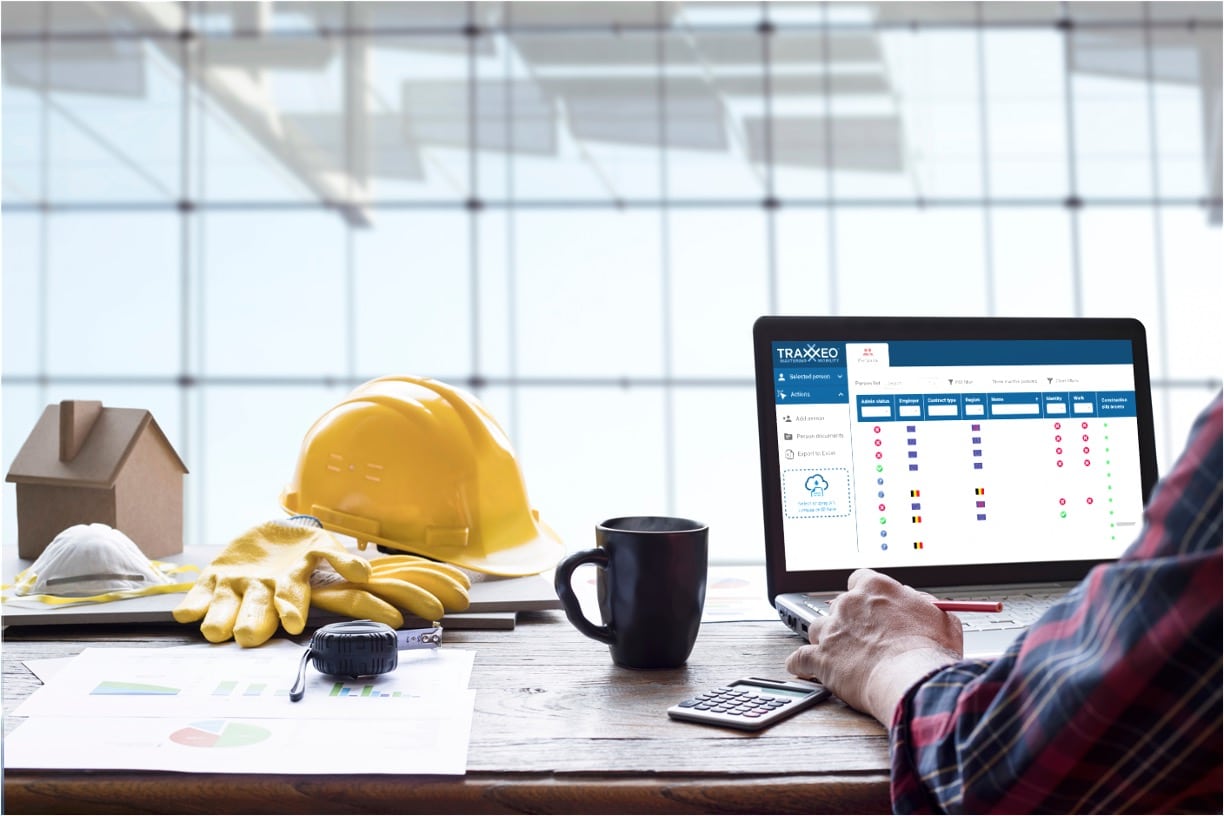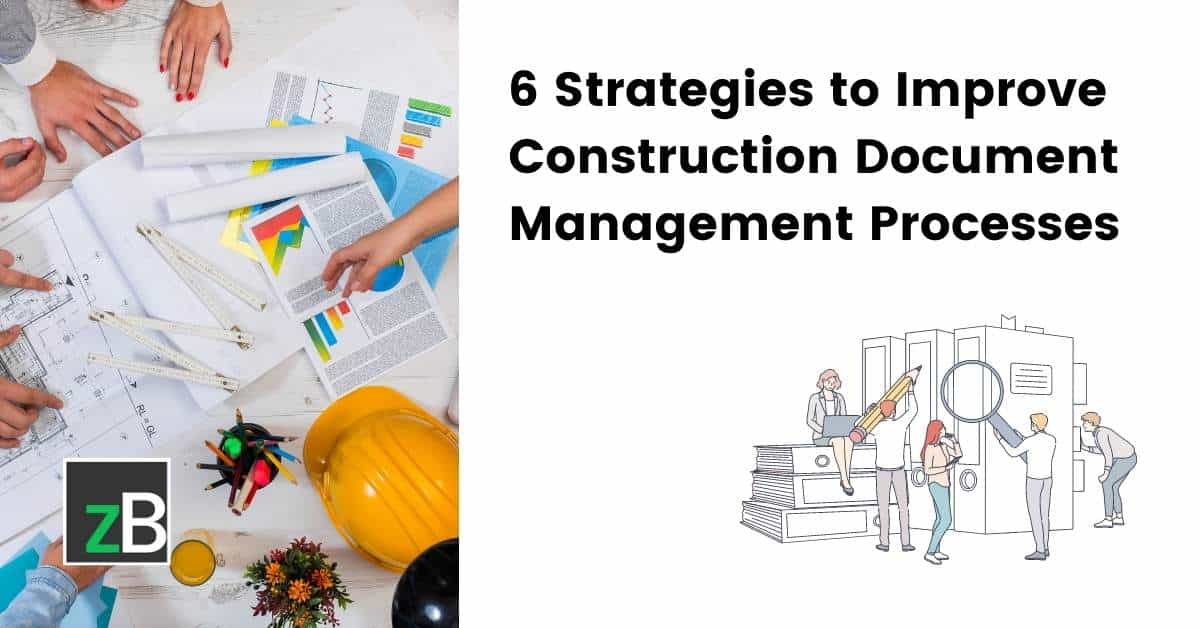Effective Construction Document Management Solutions for Every Project
Effective Construction Document Management Solutions for Every Project
Blog Article
Optimizing Job Collaboration: Engineer's Finest Practices in Building Document Monitoring
In the complex world of building projects, the efficient management of building files stands as a foundation for success. In the middle of this complexity lies a vital inquiry: just how can engineers simplify cooperation procedures to boost job results?
Leveraging Cloud-Based Systems
Leveraging cloud-based systems is an essential method for contemporary designers in enhancing building file monitoring processes. By transitioning from traditional paper-based systems to shadow remedies, engineers can enhance partnership, improve document ease of access, and improve overall task performance. Cloud-based platforms provide architects the capacity to shop, share, and update building and construction files in real-time, guaranteeing that all team members have access to one of the most present information no matter their place. This ease of access promotes smooth communication and coordination amongst job stakeholders, leading to less errors and hold-ups in the building process.
Additionally, cloud-based systems supply a secure atmosphere for storing sensitive task information, using encryption, routine back-ups, and user approval settings to safeguard information integrity. Designers can additionally take advantage of the scalability of cloud services, permitting them to adjust storage space ability and functionality based on task requirements. Generally, leveraging cloud-based systems empowers designers to maximize their building record monitoring procedures, driving better cooperation, effectiveness, and success in their projects.
Carrying Out Variation Control Systems
Having developed the advantages of cloud-based platforms in construction file monitoring, architects can now improve their paper control procedures by applying Version Control Systems. Version Control Systems (VCS) are vital devices that track modifications in records, making certain that group participants are constantly collaborating with the most recent and most accurate information. By executing VCS, architects can maintain a centralized repository where all project documents are saved, making it possible for smooth cooperation while decreasing the threat of mistakes and variation disputes.
One secret advantage of Version Control Systems is the capacity to track the full background of paper modifications, allowing users to revert to previous variations if required (construction document management). This feature is particularly valuable in building and construction tasks where style iterations and modifications prevail. VCS helps with far better interaction amongst team members by supplying a clear audit path of that made certain changes and when they were made. This openness not just enhances accountability yet likewise aids in settling conflicts or discrepancies that might arise throughout the project lifecycle.
Establishing Communication Procedures
To make certain reliable and reliable task control, engineers need to develop clear and robust communication protocols within their construction document management procedures. This system can be a job administration software application, email threads, or cloud-based storage space remedies.
In addition, interaction procedures ought to also include standards on exactly how to deal with conflicts, change orders, and immediate problems that may emerge throughout the project lifecycle. Developing an organized technique to communication ensures that all stakeholders get on the very same page, promotes openness, and eventually adds to the successful conclusion of the building job.
Utilizing BIM Software Program for Sychronisation
BIM software application plays a pivotal duty in improving coordination amongst project group participants in the building market. Structure Info Modeling (BIM) helps with partnership by offering a central platform where engineers, engineers, contractors, and various other stakeholders can collaborate in a coordinated way. Via BIM software application, task participants can access and update a shared version which contains detailed info concerning the structure style, building and construction parts, and task timetables.

Moreover, BIM software application allows real-time collaboration and communication amongst team participants, despite their physical place. With cloud-based BIM platforms, project stakeholders can access the current task info, track changes, and make educated decisions promptly. Generally, leveraging BIM software application for coordination boosts job efficiency, efficiency, and ultimately causes successful job outcomes.
Ensuring Data Protection and Conformity
In the world of building and construction document management, safeguarding data integrity and ensuring regulatory compliance are critical considerations for designers and other project stakeholders. Architects must implement robust safety actions to protect delicate job info from unauthorized gain access to or violations.

Final Thought
Finally, designers can maximize project partnership in building and construction file monitoring by leveraging cloud-based systems, implementing version control systems, developing communication browse around these guys procedures, making use of BIM software for control, and guaranteeing information security and conformity. These finest techniques help improve the building and construction navigate to these guys process, improve interaction amongst project stakeholders, and improve effectiveness in project delivery. By adhering to these guidelines, engineers can successfully take care of building files and assist in successful project results.
With BIM software program, task participants can access and upgrade a common model that includes thorough information regarding the building style, building parts, and project timetables.
Via cloud-based BIM platforms, job stakeholders can access the most recent task details, track adjustments, and make educated choices quickly - construction document management. Overall, leveraging BIM software for coordination boosts task efficiency, efficiency, and eventually leads to successful project outcomes
In conclusion, designers can optimize task cooperation in building and construction record management by leveraging cloud-based platforms, implementing variation control systems, developing communication methods, utilizing BIM software program for control, and making sure data security and conformity. These finest methods help simplify the building procedure, improve interaction amongst project stakeholders, and boost performance in job delivery.
Report this page